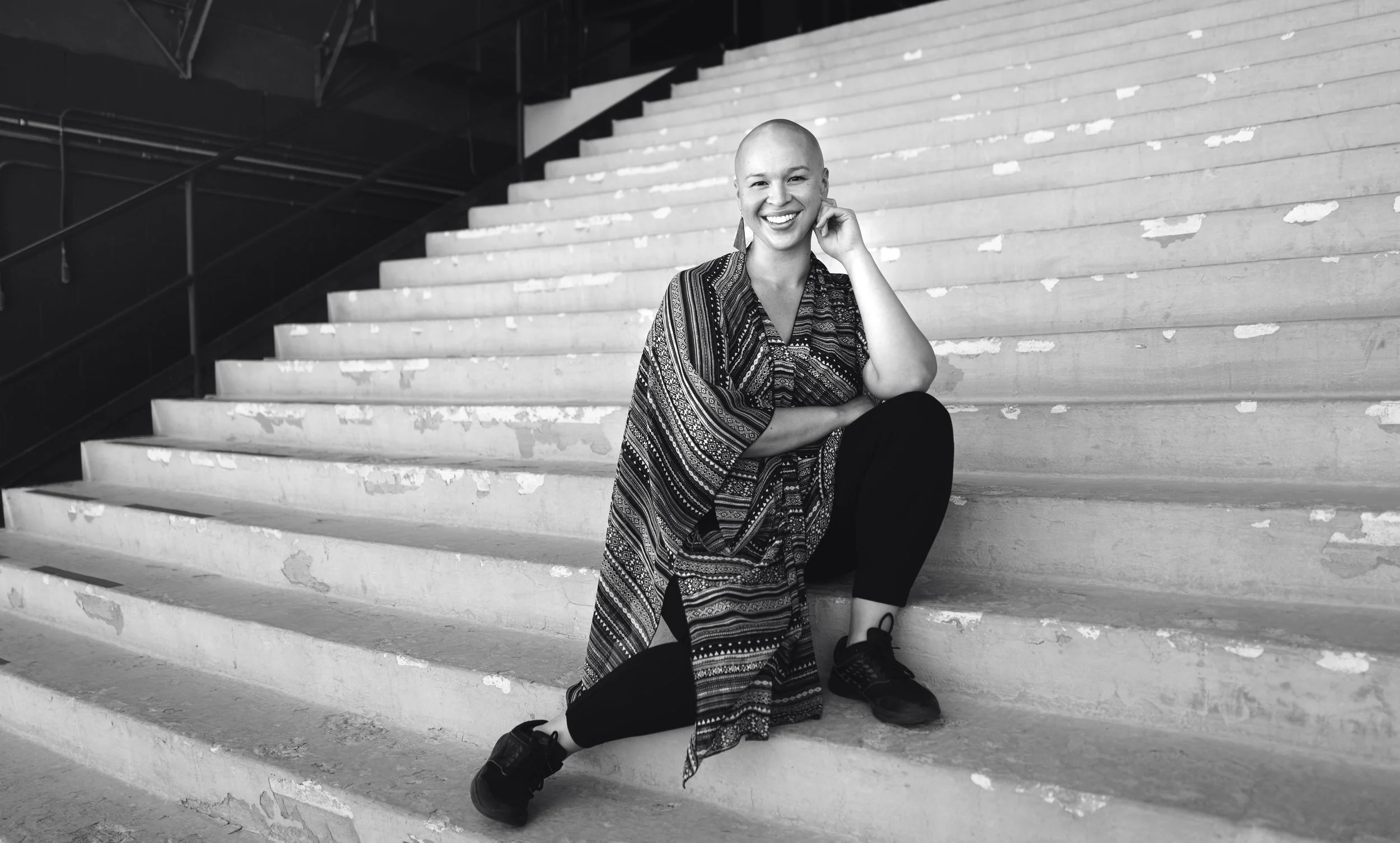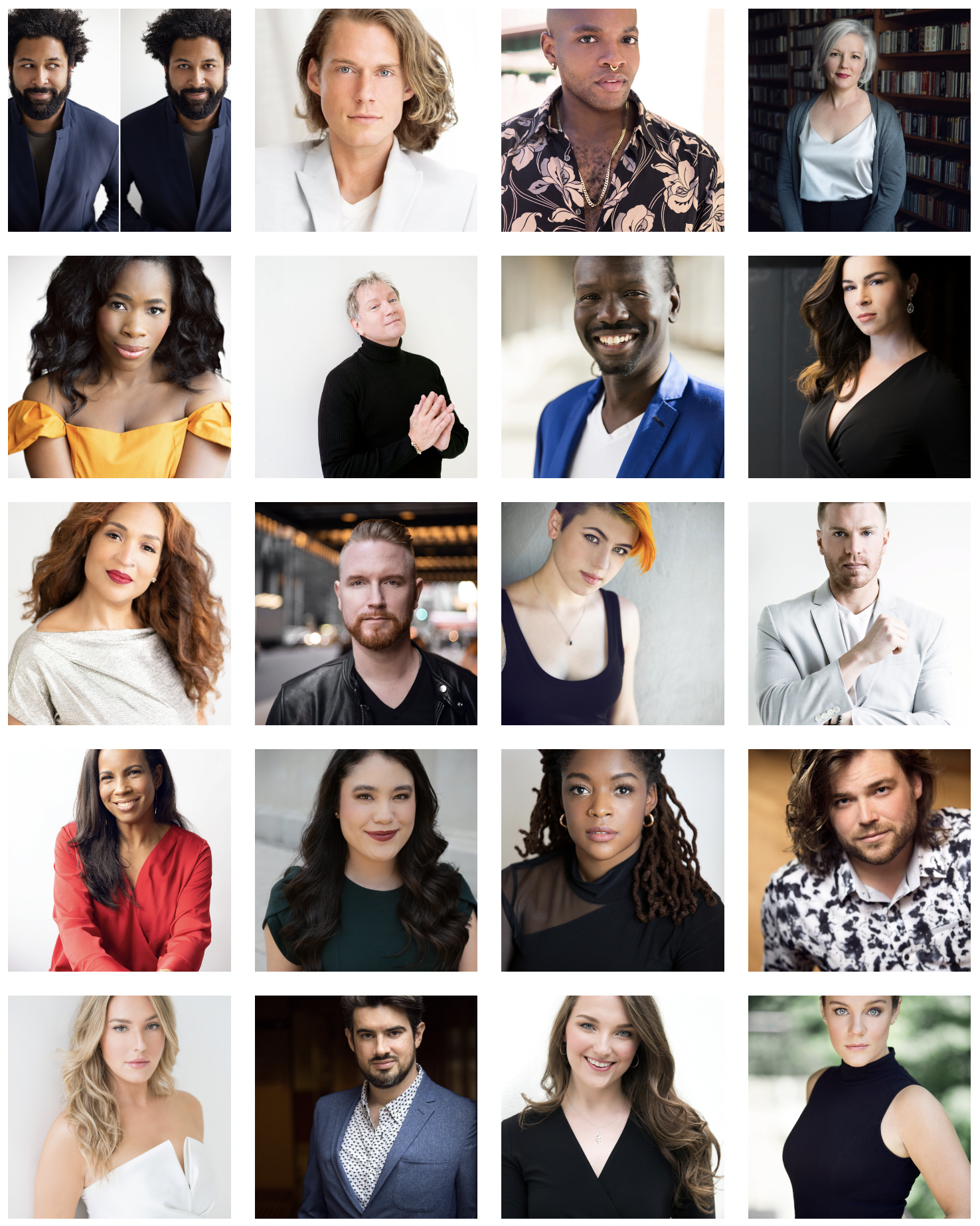
BRANDING for opera singers
What is a brand?
Why do we hate that word so much as artists?
Things artists hate: labels, definitions, being put in a box, …a cage. We fear being labelled a “brand” is too restrictive.
DEFINE: “BRAND”
-
Ask 10 people what a BRAND is and you’ll receive 10 different answers. Why?
-
A brand is based entirely on perception. This perception is not based on imagery alone. A brand is the culmination of vocabulary, images, copywriting, color, location, quality, and engagement with the public, all rolled into what the public thinks. Ultimately, the engagement of the public is required to give life to a brand. Your business simply curates each of the above experiences, adds marketing and psychology, and allows the public to infer what you choose.
-
A person, a small business, a corporation, an artist...they all have a brand.
My personal brand involves the outward expression (aesthetic) of things which are dear to me (tattoos), with minimalist but memorable fashion (jeans, black t, sport coat, hat, glasses, beard), personal vocabulary (how I talk about myself and what I do, using curated impactful wording), how I carry myself (confident, charismatic, extroverted), the quality of my products (tailored brand experiences and images that tell a story), my client advocacy, and how I engage with others... both on- and off-line.
-
You can tell me whatever you want about your brand, but the only way I’ll 1) believe it 2) remember it 3) want to follow it - is to experience your brand.
-
A brand is what the public perceives an entity to be. This is why it goes beyond having the pieces, and requires engagement.
notable
brands
Ben & Jerry’s: Hippie, Authentic, Fun, Natural, Cause-Driven, Inclusive. Through bright colors, clear logo use, witty product names, bold cause-driven statements, and community involvement their brand is distinct and blatant. There’s little confusion when it comes to knowing who they are, what they sell, and what they’re about. In 1983, rather than raising money through traditional means, they put the livelihood of their business in the hands of their community by raising their funds through Vermont-only public stock offering.
In 1985 Ben & Jerry’s Homemade Inc. undertook a public stock offering to support its ongoing growth. The Ben & Jerry’s Foundation was created at the same time, with an initial gift from Ben of 50,000 shares and an unprecedented decision by the company’s Board of Directors to commit 7.5% of the company’s annual pretax profits to philanthropy.
This is a clear brand that sells ideas through ice cream, and supports social change through the profits.
This is a company that acts like a person…
MICHAEL JACKSON
The King of Pop
Thriller (1982) best selling album of all time
Distinct aesthetic, presence, interaction, showmanship, and quality music.
NADINE SIERRA
Became the people’s soprano.
Accessible, playful, energetic, dynamic, talented.
She went from a ridiculously curated, color-coded brand that was diva-esque and stand-offish to showing BTS, selfies, her reality, and strategic promotion and proof of concept.
Artists are…a person that acts like a company or product. Artists are their own stand-alone business and benefit from the same marketing strategies as other small businesses, including:
distinct branding
targeted market
points of difference
consumer engagement
content production
We’re no longer in a “create good artistic work and jobs will appear” industry model. And that’s a GOOD thing. It means artists have the power to determine how they’re portrayed, perceived, and produced. It also means the level responsibility placed on artists is higher than before. But with the right knowledge and strategy, they can finally control the industry.
-

distinct branding
You’re unique. Be unique. Let the world see it. From presentation to personality, being yourself loudly an unabashedly is what the public responds to.
We crave authenticity.
That’s why Nadine’s brand overhaul has been so successful.
-

targeted market
Where are fans, clients, or casting directors hanging out?
When you find those spaces, virtual or otherwise, be present in them, and let your distinct brand impression do its job.
-

P.o.d.
POINTS OF DIFFERENCE
Don’t simply be bold and unique, but to go out of your way to demonstrate how and why you’re different from everyone else.
This strategy involves a fair amount of storytelling. We have to constantly educate the public about what we do…and often we have to educate our own industry about what we do and why the different is good. How the different is BETTER.
-

consumer engagement
Consumer: anyone who experiences you/your work.
Consumer engagement is about connecting with people on as many levels as possible. Public responses to social media posts and comments. Face to face interaction.
Social Media values engagement over any other metric.
It’s about putting energy into interaction.
-

content production
People are far more likely to hire an artist they feel they know, or with whom they’re comfortable. This comes from content that feels accessible.
This process is called content marketing and it’s one of the most significant ways to become a known individual in your field. Any field. The biggest key is consistency.

the adventure inward
introspective branding questionnaire
branding
questionnaire
LEGACY EXERCISE
Pretend you are writing your own obituary. How do you want to be remembered? How do you hope you’ll be discussed? What do you dream to become? What do you want to leave behind when you’re gone?
This introspective exercise is designed to work backwards from the end of your life to where you are now. It can shape moves you make based on long term dreams and ambitions.
1 - describe yourself in 20 seconds or less
The most successful artists and business owners can tell someone about who they are and what they do in 20 seconds or less. It’s a learned and practiced skill that requires a lot of experience and repetition. When you can discuss yourself with compelling brevity, people rarely second-guess you.
2 - what are 3 attributes that set you apart?
I use the term attributes because sometimes it’s who we are, as well as what our work does, that makes us different. Your points of difference start here.
TIP: DO NOT SAY YOU’RE FLEXIBLE - As young artists, we think this is an asset, but you will see that the public can’t believe that. It’s due to the “Dilution Principle.”
3 - list 5 words that describe you as a person
Mine are charismatic, inspiring, adventurous, creative, and rebellious. Immediately you can see that I’m an outside the box thinker who likes to drive other people to big things in unique ways. Listing your 5 words is the beginning of understanding yourself, and how you can talk about yourself in a professional setting.
4 - list 5 words that describe you as an artist
These 5 words will help you build your brand vocabulary. This will not only help how you talk about yourself, but also what your work is like to clients or people who visit your website or social media. Get people asking questions about who you are and what you do by keeping your statements brief and intriguing. Build from set of words, and fill in between them with connecting language.
5 - what makes you valuable?
What do you bring to the table that is valuable to them? What makes their return on investing in you worthwhile? This portion is what comes up when people ask you about you and your work after a 20 second pitch. It’s also brand vocabulary for digital content.
6 - what is your personality type?
When we understand and accept who we are and how we live, we can use that knowledge to work FOR us rather than against us. That knowledge can help us plan our networking or engagement with others in a strategic manner. It also can be a reminder that it’s ok to take a step back from time to time and give ourselves room to breathe and reset. I know I have a ridiculous bandwidth for personal interaction, which means I can smash more into my schedule before I’m ready to hide in my apartment or take a creative retreat and disappear from the world for a week. https://www.16personalities.com/
7 - how do you network?
There are hundreds of ways to network. I teach a session on it. So let me just say - networking is necessary, whether you want it to be or not. You even have to network with your own management if you have it. Interpersonal connectivity is the driving force behind business. So take a good look at how you’re presently doing so, and how you can improve your authentic presence in your industry space.
8 - who do you look up to and why?
This isn’t just about recognizing work you like, but it’s about looking for people to emulate. The people we look up to develop our perception of ourselves in the space. We see them as examples we can follow. It’s great to have heroes so long as we learn from them but don’t try to copy them. Remember, still be authentically yourself.






